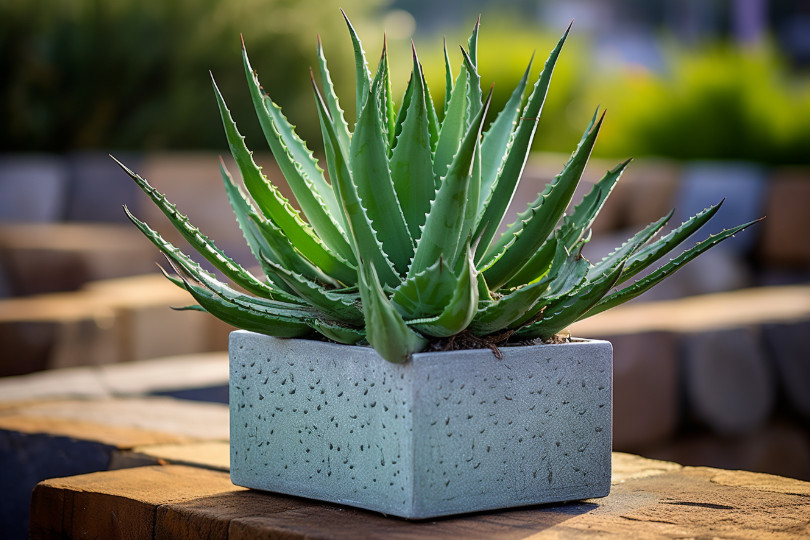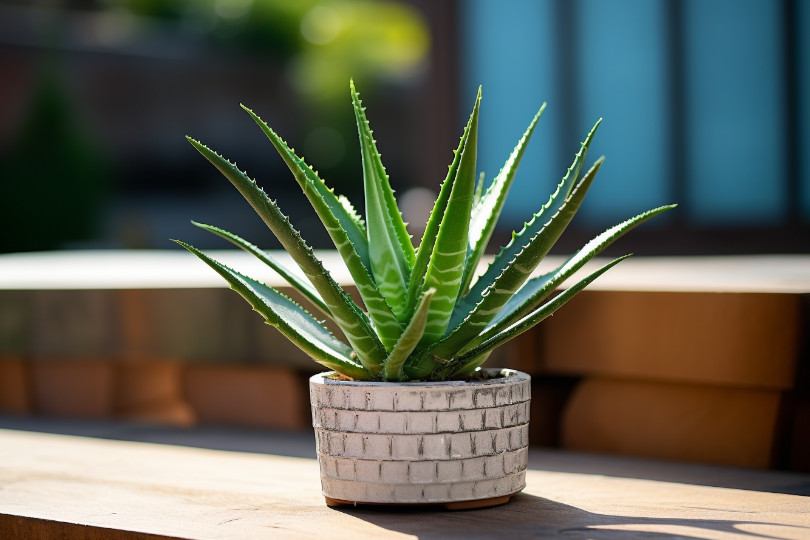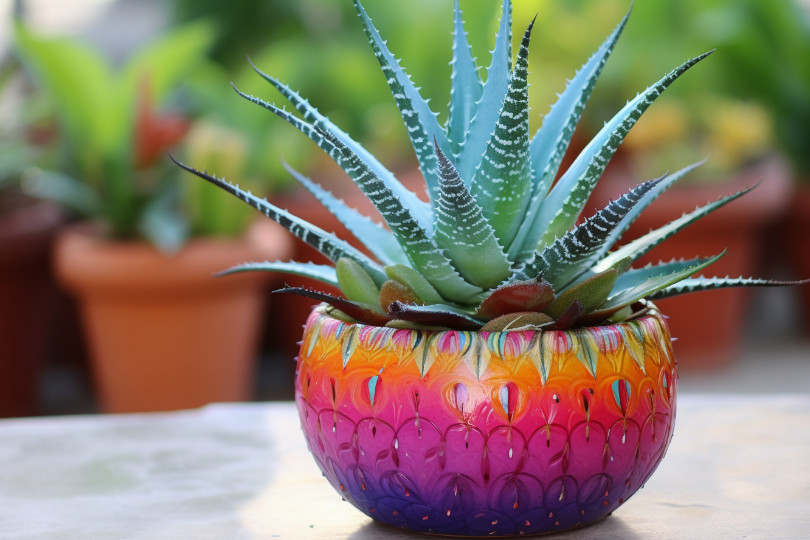Aloe vera plants are not only beautiful additions to any indoor garden, but they also offer a range of health benefits. Choosing a suitable Aloe Vera planter and soil is crucial to ensure optimal growth and well-being. In this guide we will explore the best options for pots and soil that will help your aloe vera plants thrive. We will discuss different types of planters, their advantages, the ideal pot size, and the importance of well-draining soil. By the end, you will have all the information you need to create the perfect environment for your aloe vera plants to flourish.
Table of Contents
- Benefits and Considerations of an Aloe Vera Planter
- Types of Planters for Aloe Vera Plants
- Choosing the Right Pot Size for Aloe Vera Plants
- Importance of Well-Draining Soil Mix for Aloe Vera Plants
- Repotting Aloe Vera: Adjusting Soil Mix and Care Tips
- Aesthetics and Other Considerations for an Aloe Vera Planter
- Conclusion
Benefits and Considerations of an Aloe Vera Planter
When growing aloe vera, planting them in pots has numerous advantages. Not only does it allow for effortless indoor-outdoor transitions, but it also provides better control over soil conditions, ensuring proper drainage and preventing overwatering. Additionally, pots offer protection from frost and extreme temperatures during colder months. However, choosing the suitable pots and soil is essential to ensure the health and growth of your aloe vera plants.
Types of Planters for Aloe Vera Plants
When selecting planters for aloe vera, it’s crucial to choose options that promote proper airflow for the roots. Clay, terra cotta, ceramic, and plastic pots are all viable choices as long as they have drainage holes. However, clay and terra cotta pots offer additional benefits due to their porous nature, which allows excess moisture to evaporate, reducing the risk of root rot. These pots also help regulate soil temperature, preventing the roots from getting too hot or cold.
Clay Pots for Aloe Vera Plants

Clay pots are an excellent choice for planting aloe vera due to their exceptional airflow for the roots. The porous nature of clay allows for proper drainage, preventing waterlogged soil and root rot. These pots also provide stability for taller varieties of aloe vera, reducing the risk of toppling over. When using clay pots, it’s essential to ensure they have drainage holes to allow excess water to escape.
Terra Cotta Pots for Aloe Vera Plants

Like clay pots, terracotta pots are porous and promote good airflow for aloe vera plants. These pots offer the same benefits of proper drainage and temperature regulation. Terra cotta pots are also aesthetically pleasing, adding a rustic touch to your indoor garden. When selecting terra cotta pots, ensure they have drainage holes to prevent waterlogging.
Ceramic Pots for Aloe Vera Plants

Ceramic pots are also a popular choice for planting aloe vera. These pots come in various colors and designs, allowing customization to match your interior decor. While ceramic pots may not be as porous as clay or terra cotta, they still provide adequate airflow for the roots. When using ceramic pots, ensure they have drainage holes to prevent water accumulation.
Plastic Pots for Aloe Vera Plants

Plastic pots are a practical option for indoor gardening. They are lightweight, making them easy to move around and rearrange. These pots come in various sizes and styles, offering versatility for different plant sizes and interior designs. When using plastic pots, choosing ones with drainage holes is crucial to prevent overwatering and root rot. The holes allow excess water to escape, promoting healthy root development.
Choosing the Right Pot Size for Aloe Vera Plants
Selecting the appropriate pot size is essential for the thriving growth of aloe vera plants. Aloe vera is typically sold in 4 and 6-inch pots, but larger pots should be used when the plant outgrows its current pot. It’s essential to choose a pot size proportional to the plant’s size. Aloe vera can be planted in pots ranging from 8 to 20 inches, depending on its growth. Adjust the soil mix to ensure proper drainage when repotting into a larger pot.
Importance of Well-Draining Soil Mix for Aloe Vera Plants
Well-draining soil is crucial for the health and growth of aloe vera plants. These succulents are native to arid regions and are adapted to dry soil conditions. Using a well-draining soil mix helps prevent waterlogging, which can lead to root rot. Locally produced organic succulent and cactus mixes are excellent options for aloe vera plants. These mixes contain perlite or pumice, which promote aeration and drainage.
Repotting Aloe Vera: Adjusting Soil Mix and Care Tips
Repotting is essential to aloe vera plant care, as it allows the plant to spread and grow healthier. When repotting, adjust the soil mix to ensure optimal drainage. Remove the plant from its current pot, gently loosen the root ball, and place it in the new pot with fresh soil mix. After repotting, provide adequate sunlight and water sparingly, and avoid overwatering. Pay attention to the signs of overwatering, such as yellowing leaves, mushy stems, and a foul odor.
Aesthetics and Other Considerations for an Aloe Vera Planter
While functionality is essential when choosing planters for aloe vera, aesthetics also play a role in creating an attractive indoor garden. Consider the overall design and style of your space when selecting planters. Clay, terra cotta, and ceramic pots offer a natural and rustic look, while plastic pots come in various colors and styles. Choose planters that complement your interior decor and create an appealing visual display.
Conclusion
Choosing suitable aloe vera planter and soil is crucial for the thriving growth of aloe vera plants. Clay, terra cotta, ceramic, and plastic aloe vera planter are all viable options if they have drainage holes. Clay and terra cotta pots offer the added benefit of promoting proper airflow for the roots. When selecting planters, consider the pot size proportional to the plant’s size and adjust the soil mix to ensure adequate drainage. By providing the ideal environment, your aloe vera plants will flourish and bring beauty and health benefits to your indoor garden.

